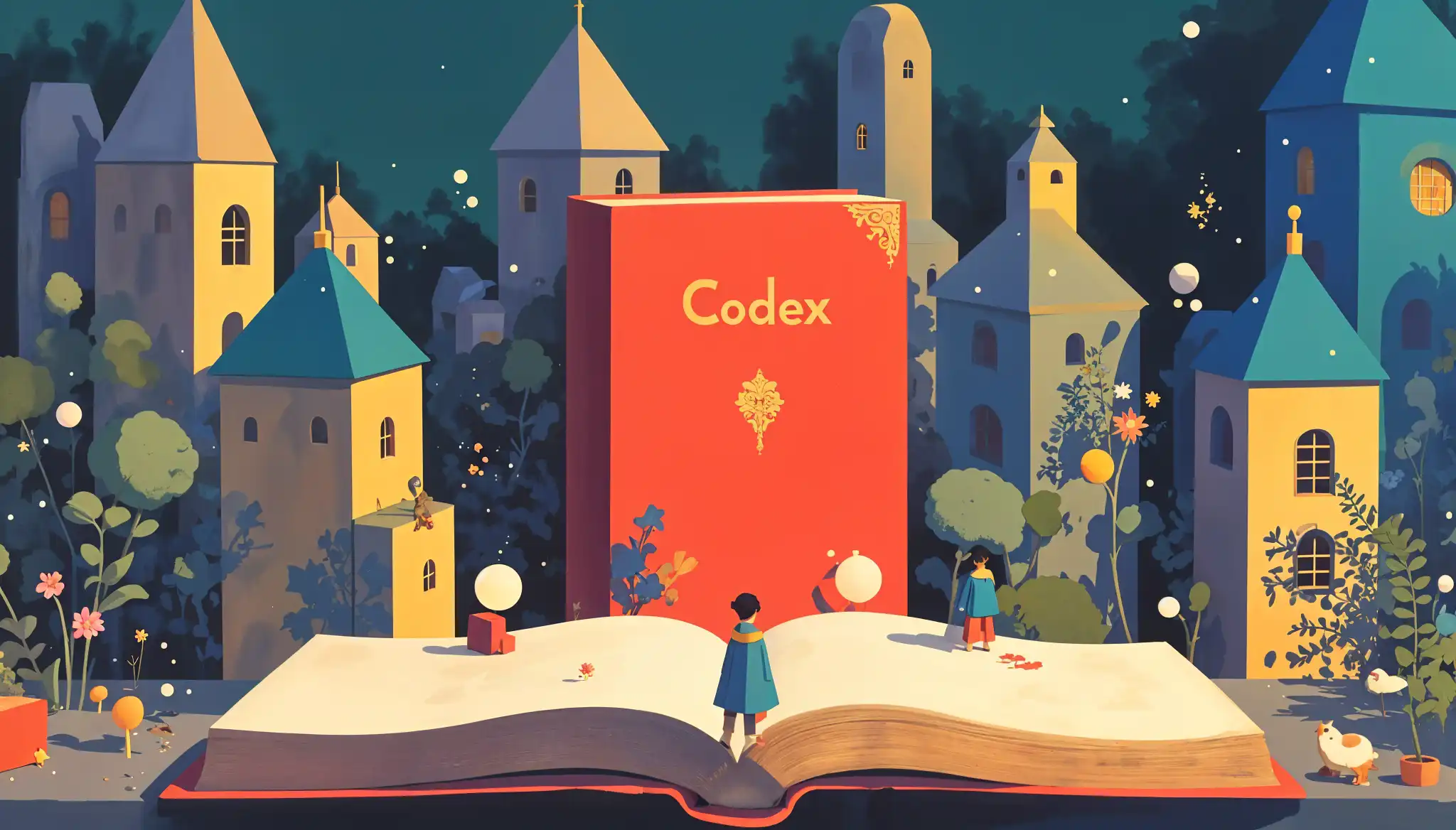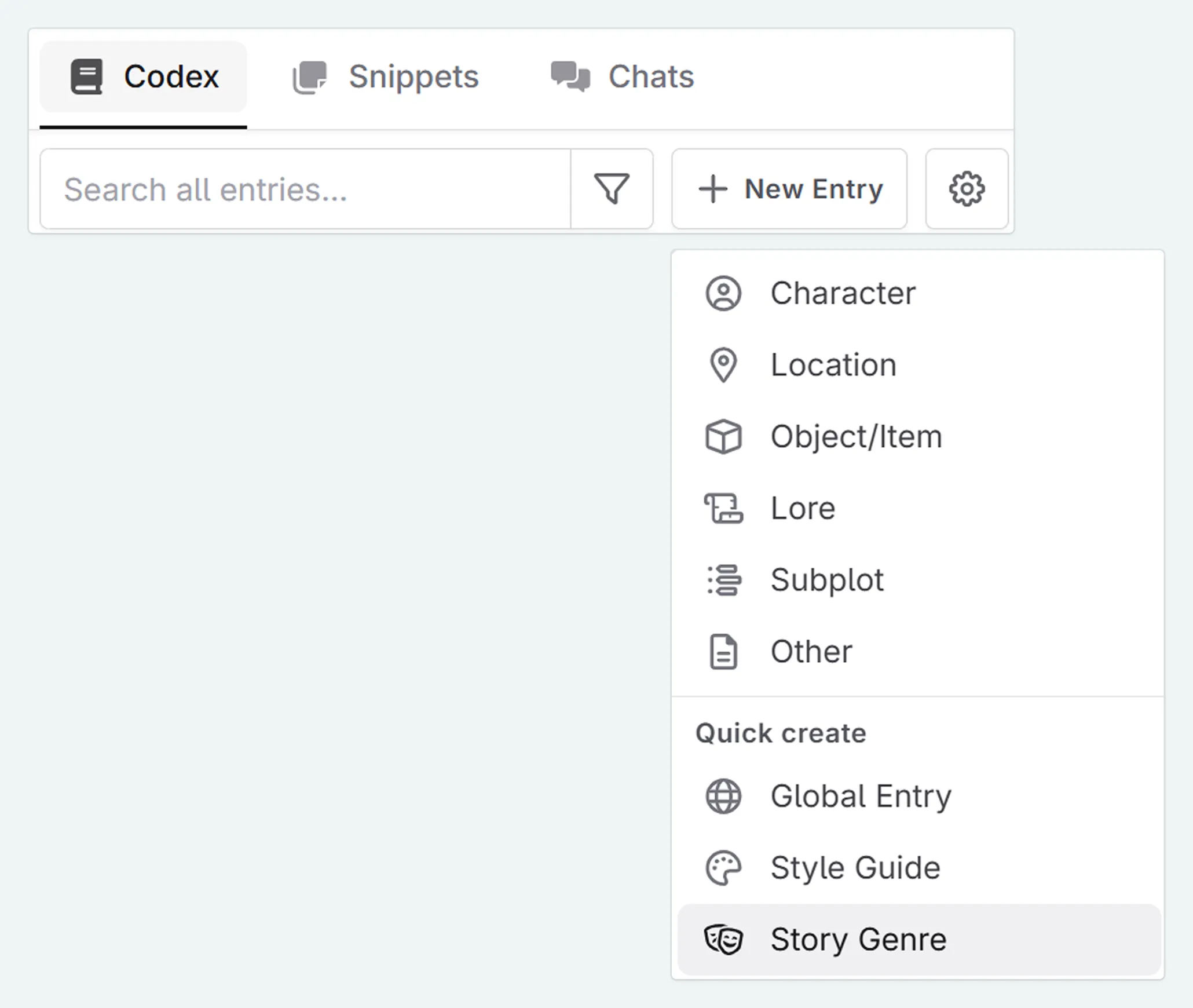
- Level:
- Advanced
- Lessons:
- 10 Lessons
Making an effective genre Codex entry
Help the AI understand exactly what genre conventions to follow and which to avoid when writing prose.
- Reading Time
- approx. 3 min
The genre of a story defines the expectations and boundaries of the story. It’s a promise to the reader, and you want to keep it. When writing with AI, using a genre Codex entry creates a lexicon of what makes your story tick, and what your readers expect of you (and the AI) when they read your work.
You’ll learn more about writing style in the next recipe on (style codex entries), but for now, let’s focus on getting the genre down.
When should I use this Codex entry?
Everyone benefits from including a genre codex entry from the beginning. After all, genre is typically one of the first elements you decide on when a story idea sparks. Even a few words sketching out our genre can act as a compass for all the brainstorming and worldbuilding that follows.
Don’t worry if your genre entry starts small - like your characters, it will evolve as your story takes shape.
How can I make a genre Codex entry?
To create an effective genre entry:
- Make a new Codex entry by pressing + new entry , then select quick create > story genre

- Fill in details of your genre. These might include:
- Core genre elements and expectations
- Tone and atmosphere requirements
- The boundaries that help define our story’s world

Case Study
I’m working on a cozy mystery… but we don’t want to just say ‘cozy mystery’ in our genre entry. Let’s look at how we can expand it, by delving into my genre entry for Letters, Leads, and Labradors.
A small-village cosy mystery in the British countryside with an animal companion. In this genre:
- the mystery is solved through wit, social connections, and observation
- there is minimal danger to our protagonist
- there is emphasis on puzzle-solving over action (our hero isn’t running on roofs… probably)
- the tone is light and occasionally comedic
Your Codex is a living document that grows alongside our story. As you discover new elements you want to highlight or avoid, you can revisit and refresh our genre entry. Since genre is a global entry, the AI will see this by default in all prompts.
Troubleshooting
So what if our genre entry isn’t working for us? Let’s have a look at a few ways to fix these:
Your genre entry is too vague
Cause: If you write genre entries like “a fantasy story with magic”, the AI doesn’t have enough direction - is this a school-based fantasy or an epic high fantasy?
Solution: Instead of being vague or overarching, you want to be specific about our genre elements. Instead of “a fantasy story with magic”, let’s try:
Low fantasy where:
- Magic is rare and viewed with suspicion
- Only hereditary magic exists
- Spells require complex rituals and preparation
- Magic always has a personal cost to the user
This gives the AI a much clearer image of the tone you want to achieve through the story. No more accidental Lord of the Rings!
Focusing only on what to avoid
Cause: It’s super tempting to create a list of “don’ts” (“no love triangles, no chosen ones”), but this leaves the AI to choose what should fill those empty spaces.
Solution: For every “don’t,” include a “do”:
- Instead of love triangles → Focus on found family bonds
- Instead of chosen ones → Hero rises through hard work and study
The AI is mixing up tropes or genre expectations in its prose output
Cause: Sometimes mixed messages can be given to the AI if we are not careful about what goes in the genre entry. The AI, like our readers, might get confused about the emotional landscape they’re meant to create, leading to prose that is lacking in direction.
Solution: You can clear this up by being more specific in your genre entry.
Primary: Cozy Mystery
Supporting Elements:
- Light romantic subplot (no triangle drama)
- Occasional humor through protagonist’s observations
- Mild supernatural elements (ghost only visible to cats)
Solution: If you do want to mix genres, then you can use the genre Codex entry to explain the “why” behind the blend. When you can justify this combination to ourselves, then the AI will also be able to better convey it.
Your genre entry is overly restrictive, leading to stilted, uncreative outputs
Cause: On the flip side, you might get overly enthusiastic, and end up with a plot outline instead of a genre guide.
Solution: Take a step back and focus on those larger brushstrokes of what makes your genre tick. “Mysteries solved through wit and social observation” rather than “Protagonist must discover the killer is the baker by finding flour at crime scene”.
This lesson was taught by:
Kate Robinson
Based in the UK, Kate has been writing since she was young, driven by a burning need to get the vivid tales in her head down on paper… or the computer screen.